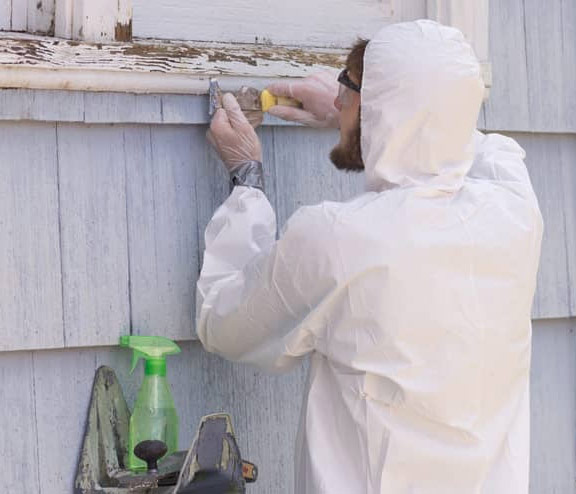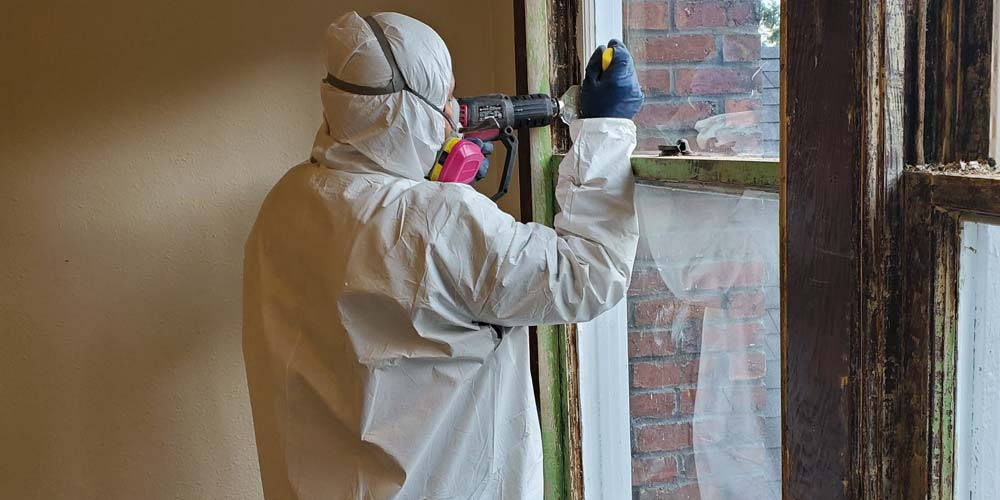Lead Removal Contractors-- Skilled Experts for Lead Abatement
Step-by-Step Process for Effective Lead Violation Remediation
Addressing lead violations demands a precise and structured technique to make certain both safety and security and regulatory conformity. The journey starts with the precise detection and assessment of contamination sources, utilizing cutting-edge diagnostic tools. Following this, adherence to government and state laws is paramount to developing an effective removal plan. Such a plan should detail the specific approaches and timelines for activity. The real remediation needs competent employees to execute these strategies while strictly adhering to safety and security protocols. However what happens after the remediation is finished? The response exists in understanding the necessary post-remediation methods that make certain lasting safety and security and neighborhood wellness.

Discovery and Assessment
Discovery and assessment are essential actions in the remediation of lead violations. To make sure an efficient removal process, it is vital to conduct a complete assessment of the atmosphere where prospective lead exposure exists. The first phase of discovery involves identifying sources of lead contamination, which can be discovered in paint, pipes, soil, and dust. Utilizing innovative diagnostic devices such as X-ray fluorescence (XRF) analyzers and atomic absorption spectroscopy (AAS) can give accurate measurements of lead focus.
Once detection is completed, a thorough evaluation needs to be undertaken. This consists of evaluating the extent and seriousness of contamination, as well as identifying populations in jeopardy, specifically youngsters and expectant women. Threat analyses often entail tasting and laboratory evaluation, environmental studies, and wellness effect research studies. The collected data must be carefully recorded to sustain the development of an effective removal technique (Lead Violation Removal in NYC).
Furthermore, it is critical to focus on areas with the highest degree of contamination and those that pose the greatest wellness dangers. Effective communication with stakeholders, including homeowner, citizens, and public health and wellness authorities, is crucial for making certain that all celebrations are informed about the findings and the succeeding steps required for removal. This first detection and analysis phase lays the foundation for a successful lead violation removal process.

Legal and Regulative Compliance
Browsing the landscape of legal and regulatory conformity is a pivotal aspect of successful lead offense remediation. Conformity makes certain not only the safety of afflicted populations but additionally the reputation and lawful standing of the organization in charge of remediation. Rules controling lead contamination are multifaceted, encompassing government, state, and neighborhood laws. At the government level, the Epa (EPA) sets strict standards under the Hazardous Materials Control Act (TSCA) and the Lead-Based Paint Improvement, Fixing, and Paint Regulation (RRP Rule)
This includes precise documents of all removal tasks to demonstrate compliance. Failure to stick to these laws can result in extreme fines, consisting of significant fines, lawful activity, and reputational damage.
Engaging legal specialists concentrated on ecological legislation can help with browsing these intricacies. Routine training and accreditation for all workers associated with the removal procedure are additionally mandatory to make certain adherence to security and click here for more regulatory criteria. By focusing on legal and regulatory conformity, organizations can efficiently mitigate threats and attain an effective removal end result.
Preparation the Remediation
Successfully planning the remediation of lead infractions begins with a detailed evaluation of the contaminated website. This initial analysis ought to consist of a comprehensive website investigation to recognize the degree and focus of lead contamination. Comprehensive tasting and laboratory evaluation are vital to create an exact contamination profile. This data-driven technique ensures that removal initiatives are suitably targeted and effective.
As soon as the contamination is mapped, a danger analysis should be performed to evaluate prospective wellness threats to humans and the atmosphere. Lead Violation Removal in NYC. This analysis ought to think about variables such as exposure pathways, population susceptability, and ecological impacts. The insights gathered will certainly develop the basis for picking a suitable removal method
Ultimately, establishing clear, achievable objectives for the remediation find more information task is essential. These goals should align with governing standards and stakeholder expectations to guarantee conformity and area acceptance. Developing a detailed removal strategy that outlines techniques, timelines, and resource allocation will promote a structured approach to the cleaning process.
In addition, it is necessary to involve with stakeholders early and maintain clear interaction throughout the planning stage. This includes notifying regional areas, acquiring essential authorizations, and collaborating with regulative companies to make sure all lawful and step-by-step needs are fulfilled. A well-crafted remediation strategy not just attends to the contamination successfully however likewise constructs trust and cooperation among all parties included.
Executing the Removal
With a well-structured removal plan in area, the emphasis moves to the actual execution of the remediation tasks. This phase entails activating the essential sources, including competent workers, specialized devices, and premium products. Begin by clearly marking roles and obligations to make certain accountability and smooth sychronisation amongst staff member.
The first action in execution is to safeguard the website. This consists of establishing up containment areas to avoid lead dust and debris from dispersing, as well as utilizing air purification systems to keep air quality. Next, continue with the removal of lead-based products. Utilize methods such as wet scratching, chemical stripping, or encapsulation, relying on the intensity and location of the contamination. It is necessary to comply with security protocols, including the use of individual protective devices (PPE) and correct disposal of harmful materials.
Throughout the remediation procedure, conduct regular evaluations and air top quality monitoring to guarantee conformity with regulative criteria. Reliable communication with stakeholders, consisting of homeowner and occupants, is important to maintain them notified of progression and any unforeseen growths. By meticulously following these actions, the remediation activities can be performed effectively and properly, ultimately mitigating lead dangers.
Post-Remediation Strategies
Post-remediation strategies play a vital duty in making certain the long-term success of lead infraction removal efforts. These strategies encompass continuous tracking, maintenance, and community education and learning to avoid future lead exposure and ensure a secure environment.
First, routine monitoring is essential. This includes regular screening of the previously affected locations to guarantee that lead degrees stay within risk-free limitations. Residential or commercial property proprietors must next develop a schedule for these examinations, ideally in cooperation with qualified environmental experts.

Third, educating the area plays an essential function in sustaining the benefits of removal. Locals and property supervisors ought to be notified regarding the threats of lead direct exposure and the very best techniques for keeping a lead-safe environment. Workshops, informational pamphlets, and area conferences can be efficient devices for sharing this info.
Final Thought
Effective lead infraction removal calls for a thorough, systematic approach encompassing discovery and evaluation of contamination, adherence to legal and regulative requirements, careful planning, and reliable implementation of removal initiatives. This systematic procedure emphasizes the relevance of thoroughness and alertness in addressing and reducing lead contamination.